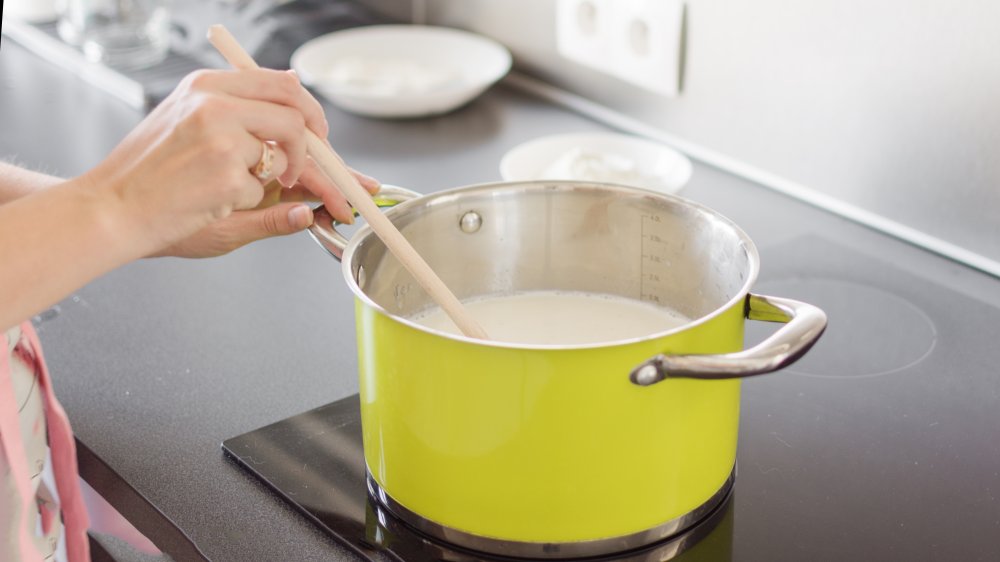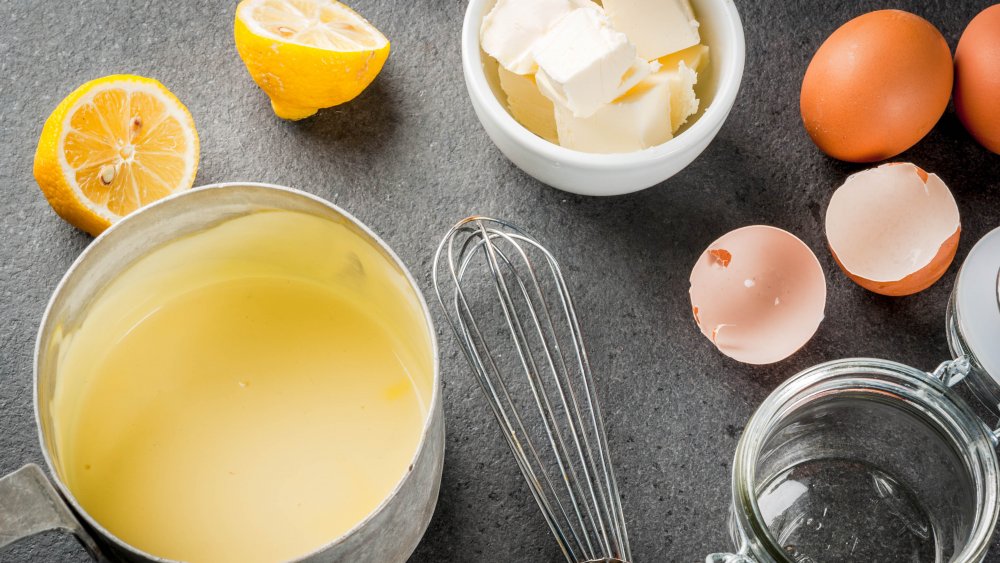The Truth About The 5 Mother Sauces
What's in a sauce? The gravy or liquid that might grace your dish can actually come in different flavors and textures. It can have different functions too — some sauces add complementary or contrasting flavors, others lend moisture to leaner cuts, and there are sauces that even make a dish look more visually appealing (via Culinary Institute of America).
It may come as a surprise that a sauce will have come from one of five "mother" sauces. The mother sauces (or "grand sauces" as they are called by the Culinary Institute of America) are sauces that can be prepared in larger quantities, then flavored to create a "smaller sauce" (via The Spruce Eats) so it matches a particular dish. The five sauces, Bechamel, Veloute, Espagnole, tomato, and Hollandaise, were baptized as such during the 19th century by Marie-Antoine Careme (via Food 52), who is widely considered to be the founder of French gastronomy (via Britannica).
Four of the five mother sauces have the same base
Four of the five mother sauces begin with a flour and butter mixture blended over medium heat — or "roux" — before a liquid is slowly added. The mixture then thickens while it boils, turning into a base for your sauce. The four mother sauces made with roux are: Bechamel (roux and milk or cream); Veloute (roux and white stock made with chicken, vegetable, or fish); Espagnole (roux and brown stock made with veal or beef); and tomato (roux with tomato).
Of the roux sauces, The Spruce Eats says Bechamel is probably the easiest, and is the base for common white sauces like cream, mornay, and cheddar cheese sauces. Veloute is the base for Normandy, Hungarian, and Bercy Sauces. Espagnole is needed for a red wine reduction (also known as Marchand de Vin Sauce), port wine, or mushroom sauce. The classic tomato sauce is the base for Creole, Spanish, and Provencale Sauces.
While it may be made in a different way, Hollandaise sauce is very much still a mother sauce. The lemony, buttery sauce is made by slowly blending clarified butter into warm egg yolks before lemon juice is added. Hollandaise can be enjoyed on its own as a sauce for eggs Benedict, but it can still give rise to small sauces like béarnaise and Dijon sauces.

